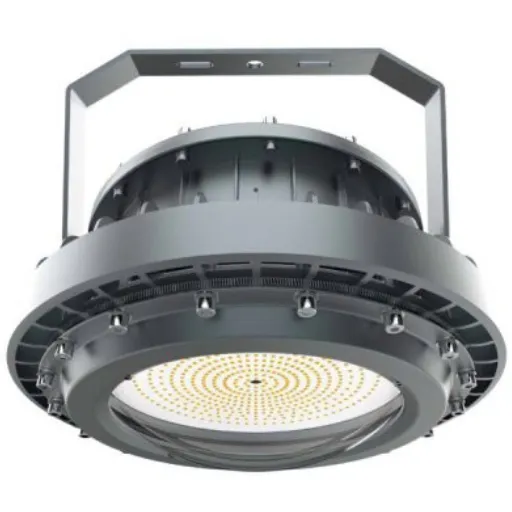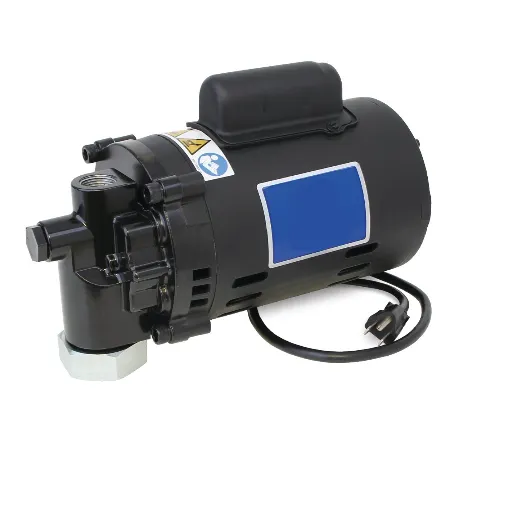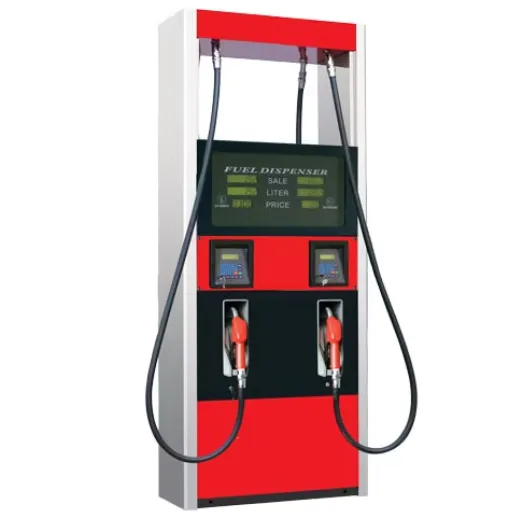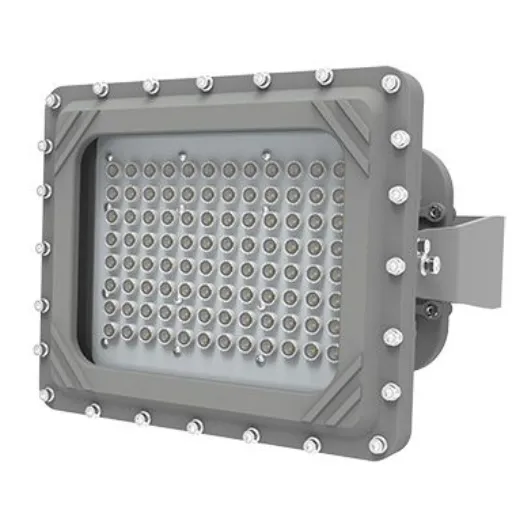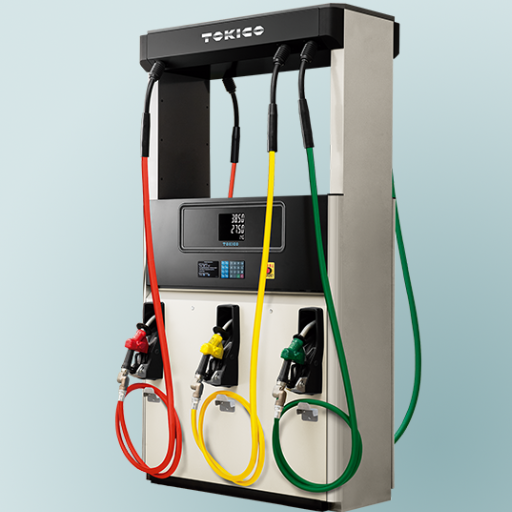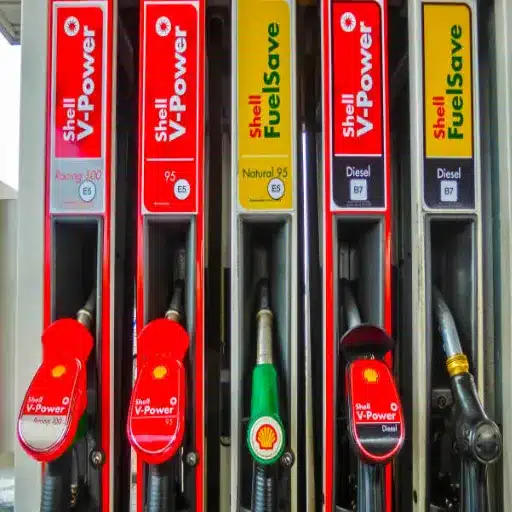Fuel dispensers act as the most critical component of any fuel distribution setup. They, therefore, constitute the connection between the fuel stored underground and the vehicles gracing the roads. But what lies underneath these most eminent systems? The basis of a fuel dispenser, aka the base, chiefly ensures efficiency, safety, and longevity. Generally, choosing the right base affects operational stability and maintenance costs in the long run. This article shall delve into and whittle down the most common types of fuel dispenser bases, their unique characteristics, and what renders them indispensable in all fuel sales. Whether you are a station owner, an industry expert, or simply curious about how fuel systems work, this guide shall forever characterize this neglected but vital part for you.
Understanding Fuel Dispensers
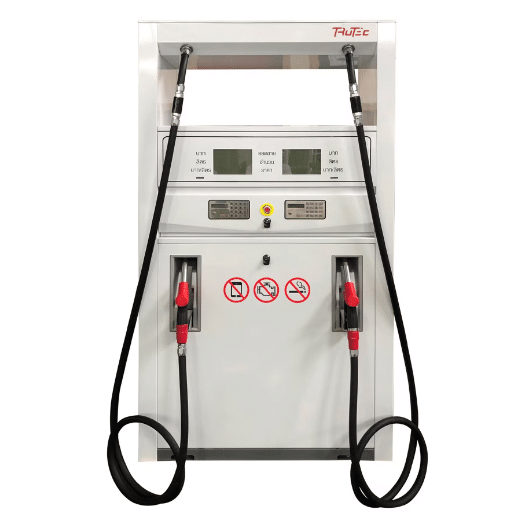
Fuel dispensers are the key components of a filling station designed for the safe and exact measurement of fuel from storage tanks into vehicles. Their work is based on the mechanism whereby a pump draws a liquid through pipes and releases it into vessels via a nozzle under user control. In modern times, fuel dispensers contain metering devices that measure the fuel precisely. They may also have some sort of digital interface for payments or monitoring. The reliability of the fuel dispenser will make for a smooth fueling operation and an efficient dispensing service.
Definition of Fuel Dispensers
Fuel dispensers are the crucial devices at fueling stations that allow the liquid fuel, such as gasoline, diesel, or alternative fuels, to be dispensed into the storage tanks of vehicles or equipment. The major components of these dispensers include fuel pumps, nozzles, flow meters, hoses, and control systems that work symbiotically to ensure reliable and efficient fuel delivery. With the advent of modern technology, dispensers are equipped with electronic flow meters to provide the very best precision when measuring flow rates, efficiency-oriented vapor recovery systems to keep the emissions down, and digital payment systems that offer users great convenience.
According to recent industry data, modern fuel dispensers come in many varieties that cater to diverse fuel types, including renewable ones, such as biodiesel, ethanol blends, and hydrogen. For instance, the demand for hydrogen fuel dispensers is expected to witness exponential growth in the coming years with the advancement of clean energy worldwide. Moreover, high-flow dispensers for heavy-duty vehicles may pump 40 gallons per minute, thus providing speedier service to hefty transport fleets. An automatic shut-off and leak detection system is among the safety features that ensure safe operation during fueling.
The evolution of fuel dispensing machines showed their adaptability toward global trends toward greener energy sources and IoT integration. Nowadays, these devices come with remote monitoring systems so that the station operator can see the fuel inventory amounts and performance-related metrics in real time, thereby reducing the downtime of station operation and improving its efficiency. Reliability, innovation, and eco-friendliness have cemented their importance in fuel infrastructure.
Types of Fuel Dispensers
Fuel dispensers have been available in different types to fulfill various demands in various settings. The main classifications include suction fuel dispensers, submersible pump dispensers, and multi-product dispensers.
Suction Fuel Dispensers: Suction dispensers are preferred at smaller fuel stations or places with less fuel demand. These dispensers dispense the fuel from the underground storage tank into the nozzle through a built-in pump. They are easy to design, maintain, and cheaper. However, they cannot operate well in high-volume operations due to pumping efficiency and flow rate restrictions.
Submersible Pump Dispensers: The submersible type uses a pump inside the storage tank that pushes fuel toward the dispenser. This efficient system allows rapid vehicle refueling, making it a decent solution for bigger stations with huge customer footfall. They also permit underground pipe runs of longer distances than what suction systems will provide, thus granting greater layout flexibility to stations.
Multi-Product Dispensers (MPDs): MPDs are considered a step forward from the standard dispensers and are implemented to cope with one or more fuel types, such as gasoline, diesel, and alternative fuels, such as ethanol blends or compressed natural gas (CNG). Thus, they have been fitted with multiple nozzles and electronic controls so drivers can select their exact type. Newer innovations have included digital displays, contactless payment, and the ability to charge electric vehicles, reflecting the evolving nature of fueling needs.
According to recent data, the demand for advanced fuel dispensers is growing globally due to the increased awareness of cleaner energy alternatives and innovative fueling technologies. Modern fuel dispensers now have their systems integrated with the Internet of Things (IoT), which allows predictive maintenance, fuel inventory management, and improved customer experience.
Components of a Fuel Dispenser
Several essential components render an efficient atmosphere for fueling. These include:
Hydraulic System is in charge of pumping, valve operations, and metering fuel delivery from the storage tanks to the nozzle. Stocked meters measure the exact amount during fuel dispensing.
Nozzle—Users confront this dispensing equipment, called a nozzle, to direct fuel into the vehicle’s tank. Most nozzles have an automatic shut-off feature to avoid spillage once they detect a whole level.
Hoses and Piping—A durable hose is internally piped from a fuel tank of a single dispenser to provide a safe path for fuel transfer.
Display System—This is an electronic interface that allows users to view dispersed data, such as the amount of fuel dispensed for pricing or volume. Many contemporary dispensers now provide touch-screen facilities for ease of use.
Electronic Control System facilitates different operations such as transaction processing, communicating with the central servers, and fuel management. Also, due to its strong link with IoT technologies, this system can positively influence the operational efficiency and dependability of the entire ecosystem.
Each component is crucial in a fuel dispenser’s functioning, affecting safety, accuracy, and ease of operation.
Types of Fuel Dispenser Bases
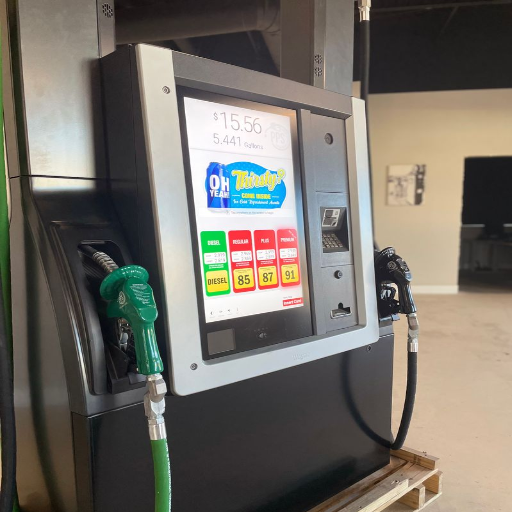
Fuel dispenser bases may be divided into two categories:
Above-Ground Bases: These sit on the ground outside and are used at gas stations for easy installation and maintenance. Being set exposed makes the above-ground bases easy to repair and replace, which is terrific in a land of stable weather.
Underground Bases: These are put into the ground to protect them from all environmental factors, such as extreme weather or physical damage. An underground base is made to last and put in places where space is limited or aesthetics matter.
Above-Ground Dispenser Bases
Above-ground dispensers are used in several application areas because of their simple installation and easy access. Made with robust materials like stainless steel or hard plastics, the bases accommodate somewhat more than moderate environmental conditions. They are generally preferred for being cheap yet fast to install, requiring almost no groundwork. According to industry trends, above-ground dispensers are preferred in urban and suburban areas where persistent maintenance or posterior upgrading is expected.
These dispenser bases will support many sizes and can be modified to suit operational parameters. The data show that user access can increase by 40 percent if the setup is aboveground rather than subterranean due to easier servicing with no need for excavation. Nevertheless, proper anchoring is essential, and regular inspections should be conducted to maintain the base stability and operating efficiency, especially in areas subject to strong winds or physical impacts. Such bases are still seeing active service in balancing convenience and functionality for commercial and residential areas.
Below-Ground Dispenser Bases
Below-ground dispenser bases are a discreet and durable solution for fuel or utility installations. Since the systems are embedded beneath the surface level, they allow greater protection against environmental factors or even external damage that may come. One advantage of the below-ground bases is their ability to optimize space, especially in areas where surface-level equipment might impose restrictions or serve as an eyesore.
In the modern world, below-ground bases are generally made of reinforced concrete or corrosion-resistant materials for longevity and structural performance. Recent technology has also transformed below-ground dispensers or bases to be very maintenance-friendly, based on modular concepts that simplify component access.
Industry data confirm that such bases are considered prime choices for busier sites with an urban character, where aesthetics and functional efficiency must be maintained. The below-ground solutions also allow for less variation in equipment temperatures, thereby retaining better operational performance.
However, soil composition and groundwater levels should be considered before installation because these factors affect long-term stability. Despite their heavier upfront expenses compared with above-ground solutions, below-ground bases generally provide much better long-term returns regarding security, durability, and low maintenance requirements.
Portable Dispenser Bases
Portable dispenser bases are designed for maximum convenience, versatility, and ease of service delivery at events, on construction sites, or for temporary setups. These bases are usually lightweight but sturdy, made from high-density polyethylene or strong reinforced plastic materials. They have the strength to hold the dispenser yet remain light enough to carry around. Many are aided in mobility by an ergonomic handle or wheels.
Based on records, portable dispenser bases can hold capacities ranging from 2 to 10 gallons of liquids, depending on their design and purpose. The advanced ones also include anti-tip mechanisms and adjustable leveling facilities to give a good stand on uneven surfaces. Other design-wise innovations focus on being green solutions, such as bases from recycled materials or those compatible with sanitization stations.
This product has exhibited a rapid demand, prompted by the ever-increasing awareness of hygiene and the need for adaptable and efficient solutions. Portable dispenser bases are becoming widely used by hygiene industries such as healthcare, education, and hospitality for their flexibility and functionality. They are designed for quick set-up and break-down, thus favored in temporary installations asking for fast deployment without compromising durability or performance.
Considerations for Choosing a Fuel Dispenser Base

Considering fuel dispenser base selection, it is essential to emphasize durability and stability so the structure can perform for a long time under varying conditions. Select materials that resist corrosion and can be exposed directly or indirectly to fuels and weather elements. Remember that ease of installation and maintenance helps avoid downtime during operations. Also, ensure that the fuel dispenser base specs correspond to those of the dispenser model and safety requirements commonly accepted in your region. Another critical factor is that enough room should be left for piping and wiring so that system integration can be facilitated easily.
Durability and Weather Resistance
Where durability and weather resistance are required for outdoor applications, any shortening of the working life or impaired performance would occur. Stainless steel or powder-coated aluminum is highly regarded for corrosion resistance and standing up to rough weather. For instance, stainless steel types 304 and 316 provide excellent resistance to rust and oxidation, even in a humid environment or close to the coast.
Weatherproof coatings such as polyester or epoxy offer a more advanced layer of protection, guarding against UV radiation, rain, and temperature changes. According to the research, the coatings’ surface-retaining integrity can last up to ten years under typical conditions.
The tolerance of a material for temperature changes is equally important. Some materials, such as reinforced polymers, can withstand extremely high temperatures from -40°F to 250°F without any finish warping or becoming brittle. These make them excellent choices for application in areas with unpredictable weather conditions.
On the other hand, testing standards such as ASTM B117 for salt spray resistance or ASTM D522 for flexibility can best be used to test for the durability of the materials against corrosion and mechanical stresses. Those materials that meet such criteria shall be more suitable for durable outdoor use. Choosing the right materials and designs that can stand against the test of environmental hazards will significantly reduce maintenance costs and extend the equipment’s lifetime.
Cost-Effectiveness
Choosing cost-effective materials and designs is essential for maintaining financial efficiency and long-term sustainability. Depending on recent industry numbers, a corrosion-resistant coating may reduce maintenance costs by a staggering 35%, making it an exceptionally clever expenditure for outdoor infrastructure. Similarly, the use of modular components within the product design processes reduces production costs by 20%-30% through simplifications of manufacturing and ease of repair, while energy-efficient materials, such as advanced composites, reduce utility expenses during operation and simultaneously meet more stringent environmental standards, offering potential benefits in terms of regulatory compliance. If durability and low maintenance are considered initially, the company will result in huge savings throughout its life, yielding greater operational efficiency.
Installation and Maintenance
Proper installation and maintenance determine a system or equipment’s longevity and good performance. During installation, the instructions manual and industry specifications must be followed to guarantee that installations operate efficiently. Precision measuring instruments and certified technicians should help limit margin errors, which, in turn, cause operational problems or premature wear in all installations. Researchers have asserted that improper installation could reduce equipment efficiency by as much as 30% in some cases. This is why it is one step that should be given due importance.
On the other hand, periodic maintenance is paramount to an asset’s longevity. Regular inspection, lubrication, cleaning, or replacement of worn-out components can prevent sudden failure or expensive repair. It has been reported that adopting a preventive maintenance program will reduce downtime and repair costs; thus, it is worthwhile. Utilization of modern maintenance technologies, such as predictive analytics and IoT-based monitoring, ensures that firms can deal with probable problems before these affect performance in the domain.
Impact of Fuel Type on Dispenser Bases
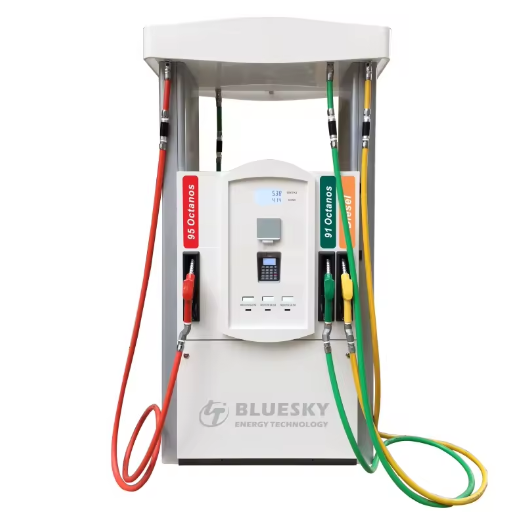
The type of fuel stored and dispensed may affect dispenser base longevity and maintenance requirements. Gasoline and diesel fuels can cause wear and tear over time, especially if proper sealing and material compatibility are not considered. Due to their chemical composition, ethanol blends and biodiesel can be more corrosive because dispenser bases need corrosion-resistant material. Regular maintenance and proper material suitable for a particular fuel type are suggested, which can extend the dispenser base life and ensure efficient operation.
Diesel Fuel Dispensers
Among the main components of a fuel station, diesel fuel dispensers bring about the efficient and safe dispensing of diesel. The new high-level dispensers have feature applications in high-flow nozzle design owing to the large fuel tank capacity of commercial vehicles and heavy machinery. Modern diesel dispensers are made from sturdy, corrosion-resistant materials, such as stainless steel and coating compounds, giving them a long lifespan even under high usage.
Data collected over time reveal that diesel fuel dispensers’ dispensing rates mostly range from 15 to 40 gallons per minute (GPM), some of which are high-speed for fleet fueling purposes. Further technological enhancements in digital meters and automated systems give operators the precision to monitor fuel use and minimize fuel loss. Fuel management systems integrated with these dispensers generate immediate reports, which in turn help businesses streamline operational efficiency.
Sustainability is also receiving burgeoning attention. Biodiesel dispensers, designed as an alternative renewable source, are being upgraded to accommodate biodiesel blends’ increased viscosity and chemical composition without sacrificing performance. Appropriate installation, proper maintenance, and usage of certified components will always be paramount in maintaining functional reliability for any diesel dispenser.
Gasoline Fuel Dispensers
The gasoline fuel dispensers are designed for modern-day fueling stations, emphasizing efficiency, registration, and safety measures. These advanced dispensers run on newer technologies, such as new payment systems and vapor recovery, to give the customer the best value while considering environmental compatibility. Most newer dispensers arguably have a digital interface for fuel delivery measurement and retailer branding to meet custom needs.
Research in the industry has forecast a steady growth in the global gasoline dispenser market, triggered by a rise in fuel stations and the upgrade of existing infrastructure. For example, bright dispensers with IoT capabilities are increasingly adopted in North America and Europe, enabling real-time artificial intelligence monitoring and predictive maintenance. Further, higher standards for fuel efficiency and emission norms have facilitated the dispensing machinery to minimize fuel loss and maximize operational reliability.
The whole emphasis remains on safety, stealing away the possibilities of leakage, regulating fuel flows, and lowering the risk of fire hazards. The gasoline fuel dispensers come in modular configurations that would meet different layouts for fuel stations, thus assuring that each market goes together seamlessly. These developments also underscore the evolution in gasoline dispenser technology, where the need for smooth running of stations combines with the need for greener solutions.
Alternative Fuels and Their Requirements
The energy landscape is changing, shifting from traditional fossil fuels to alternative fuels, including electric power, hydrogen, biodiesel, ethanol, and compressed natural gas (CNG). Each alternate fuel has its range of infrastructure, storage, and handling requirements to assure safety and efficiency.
Electricity: Electric vehicles use electricity via rechargeable batteries or fuel cells. Such an infrastructure needs charging stations, ranging from Level 1 chargers that plug into standard household outlets to ultra-fast DC fast charging. Adept with current industry trends, the EV charging market is projected to grow at a CAGR of 25.6% from 2023 to 2030, supporting the growing demand for an EV front infrastructure.
Hydrogen: Hydrogen fuel is usually used in fuel cell electric vehicles. It must be stored in high-pressure tanks or cryogenic vessels at freezing temperatures. Hydrogen stations also follow stringent procedures for compression and dispensing. The hydrogen economy gathered momentum, with over 50 countries drafting hydrogen strategies to reach net-zero emissions by 2050.
Biodiesel and Ethanol: Biodiesel comes from vegetable oils and animal fats, while ethanol usually comes from corn or sugarcane. Both fuels can be blended with conventional fuels or used in special engines. Biodiesel storage tanks must prevent oxidation and contamination, while dispensing systems for ethanol-blended fuels must be compatible because of corrosion issues. According to the U.S. Department of Energy, ethanol blends such as E85 are major contributors toward reducing greenhouse gas emissions in the transportation sector.
Compressed Natural Gas (CNG): CNG is a cleaner fuel that is stored and transported under high pressure. Its infrastructure entails storage cylinders and CNG filling stations with compressors. Many fleets, including transit buses and delivery trucks, have increasingly embraced CNG as a cheaper and greener alternative. A report forecasts that 2032 the global CNG vehicle market will surpass $156 billion.
Bringing about the transition to alternative fuels requires massive investments in infrastructure, training, and policy development. Around the world, governments, always in collaboration with the private sector, invest to fast-track cleaner energy options, thus forging the future of this industry on a bedrock of sustainability.
Materials Used in Fuel Dispenser Bases
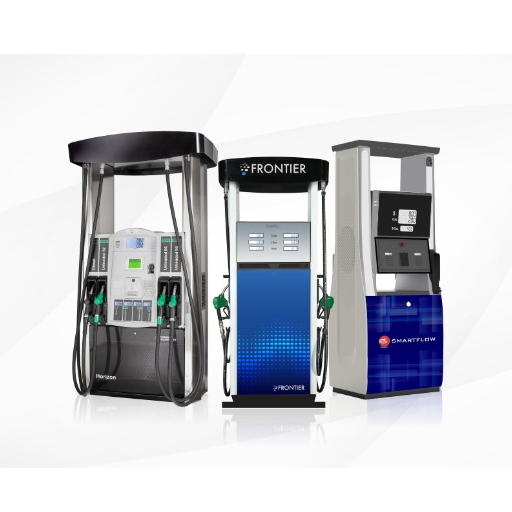
To ensure longevity and safety, fuel dispenser bases are mostly made of materials that promise durability and corrosion resistance. These materials include stainless steel, aluminum, and other more advanced polymers, such as fiberglass-reinforced plastics. These materials were selected due to their capacity to resist harsh atmospheric conditions, fuels’ chemical action, and mechanical exertion during use. Anti-corrosive coating and treatment are also applied for further protection, helping with reliability as the years wear on.
Steel Dispenser Bases
They provide incredible strength for the enhanced durability and structural integrity afforded by a choice of steel construction of bases in industrial and commercial settings. Made generally with fine-quality stainless steel, these bases are extremely corrosion-resistant and suitable for environments where moisture, fuel spills, and other harsh conditions abound. Grades 304 and 316 are highly renowned for the anti-corrosive properties imparted to them. Grade 316 renders superior resistance due to the element molybdenum, especially when exposed to aggressive marine or chemical environments.
According to the latest industry data, stainless steel retains its structural capacity after decades of exposure, boasting an average lifespan of over 20 years in a moderate environment with adequate maintenance. Furthermore, depending on the base model, these steel dispenser bases carry heavy loads, usually several hundred pounds to above a thousand pounds. This implies they bear the weight of dispenser units in high-traffic zones where reliability is strongly needed.
Today, new steel bases feature precision welds, reinforced corners, and a good selection of modular options to suit purpose-specific needs. Surface treatments such as powder coating and electropolishing are common among manufacturers nowadays, providing a secondary layer of protection against scratches, stains, and general wear and tear. With such forward-thinking advances, steel dispenser bases remain one of the most cost-effective and long-term investments for companies that value safety, aesthetics, and performance.
Plastic Dispenser Bases
Plastic dispenser bases are a lightweight, cost-saving option that offers strength and versatility. I recommend one for businesses looking for easy installation and multiple design options, since they can be more fabricated and corrosion-proof than metal alternatives.
Concrete Dispenser Bases
Concrete dispenser bases are known for their ruggedness and suitability for harsh environmental conditions. Such facilities are best used when there is a big crowd or under an open sky. These bases are heavier than the plastic and metal varieties, lending them exceptional stability and resisting tips or displacement.
Another factor favoring concrete is its resistance to extremes of temperature and weathering, which provides for a long, practically maintenance-free service life. Industry data shows concrete bases resist cycles of freezing and thawing with little significant degradation, which is a vital feature for areas with varying climates.
Furthermore, the development of concrete technology paved the way for numerous green solutions, like using recycled materials as part of the concrete mix; for instance, in modern-day designs, fly ash and recycled aggregates are pretty standard, thus providing a sustainable solution alongside maintaining structural integrity. Studies claim that concrete, while initially more expensive, through its durability, can lower the cost-per-year investment with time.
Concrete dispenser bases can be customized with an array of surface finishes, colors, and patterns to fit particular branding or design requirements, thus adding impeccable functionality to their aesthetic appeal. Their versatility and sturdy construction make them an asset that any business would want to invest in for decades.
Reference Sources
Consumer Protection Related to Dispensing Pump Manipulation in SPBU (Gas Station)
Petroleum Filling Stations and Their Impact on the Environment in Nigeria
Frequently Asked Questions (FAQs)
What is the Accuracy of Fuel Dispensers?
The accuracy of fuel dispensers is critical for ensuring fair transactions and customer satisfaction. Fuel dispensers are designed to deliver fuel products accurately, minimizing the maximum allowable error to meet legal standards. Calibration of fuel dispensers is a mandatory process that ensures they operate within specified tolerances. To achieve high precision, dispensers often incorporate advanced computer technologies that monitor flow rates and adjust for variables like temperature compensation and thermal expansion. Regular maintenance and accurate calibration are essential for keeping dispensers functioning correctly, particularly in winter conditions when temperature fluctuations affect fuel density.
How do Fuel Dispenser Bases Affect Accuracy?
The base of a fuel dispenser plays a significant role in its overall accuracy. A well-constructed base can help maintain stability and reduce inaccuracies caused by external factors such as ground movement. Many fuel dispensers are developed with high-precision bases that account for the weight and dynamics of the unit, ensuring that the dispenser remains level during operation. This stability is crucial for achieving accurate measurements, especially when dealing with different types of fuel products. Bases made from durable materials can better withstand the conditions of a busy fueling environment, which is essential for long-term reliability.
What are the Common Types of Fuel Dispenser Bases?
Common types of fuel dispenser bases include concrete, metal, and composite materials. Concrete bases are often preferred for their durability and ability to support heavy dispensers, making them convenient for various fueling applications. Metal bases are also popular due to their strength and resistance to corrosion, providing a long-lasting solution. Composite bases, while less common, offer weight and ease of installation advantages. Each base type has unique properties that can affect the overall performance and accuracy of the fuel dispenser, depending on the site’s specific requirements.
How Does Temperature Compensation Work in Fuel Dispensers?
Temperature compensation in fuel dispensers is essential for maintaining accuracy, particularly in varying weather conditions. Fuel density changes with temperature, leading to inaccurate measurements if not adequately accounted for. Advanced dispensers utilize sensors and computer systems to adjust the volume of fuel delivered based on its temperature, ensuring that customers receive the correct amount regardless of fluctuations. This technology is critical when fuel can expand or contract significantly during winter. By incorporating temperature compensation, fuel dispensers can provide a fairer and more precise service to car and motorcycle users.
What Role Does Calibration Play in Fuel Dispenser Performance?
Calibration is a critical aspect of maintaining fuel dispenser performance and accuracy. Regular calibration ensures that dispensers deliver fuel products within the legal limits of maximum allowable error, thus protecting the business and its customers. The calibration process typically involves using standardized measuring equipment to verify that the dispenser’s output matches the amount indicated on the meter. Inaccurate dispensers can lead to significant financial losses and damage to reputation, making it essential for operators to follow strict calibration schedules. Additionally, calibration helps identify potential issues with the dispenser’s motor or flow measurement systems, ensuring reliable operation.

